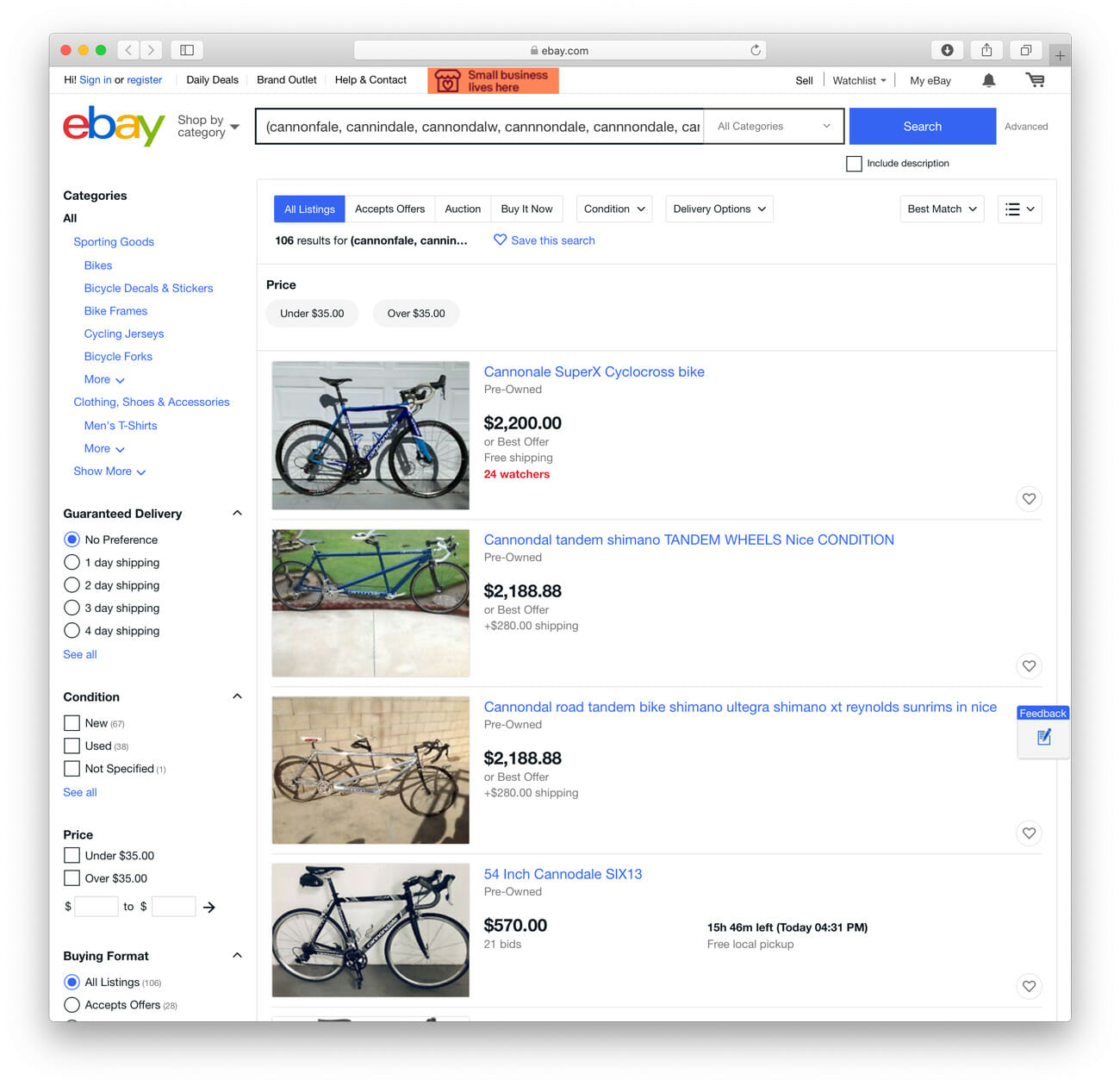In his book Outliers, Malcolm Gladwell famously posited that if you spend 10,000 hours practicing a skill – play a violin, or chess, or tennis, for example – you’ll become world-class at it. His theory has since been debunked – there’s no magic number for greatness or surefire way for any of us to become successful, but the basic logic does hold some water. To be exceptional, expect a lot of practice.
Likewise, if you’re looking for the best bike gear, start by asking someone who rides a lot. Pedaling thousands of miles across the country (or similar ultra distances) will put any product – helmet, shorts, lights, tires, brakes, etc. – through its paces. It’ll see rain, wind, heat, snow, mud, dust and dirt. It will need to be versatile, tough, repairable and comfortable, even after hundreds of hours. Through it all, a long-distance rider will see what works and what doesn’t, and likely have sage advice for you.
After riding 4,500 miles from Cabo San Lucas to Anchorage, I developed opinions about every screw, strap, fold, pocket, material and detail of my kit. Long-distance cyclists like me are a fanatical yet highly practical bunch. Representing a needle-thin portion of the market, we obsessively research all kinds of gear, comparing factors like weight, durability and safety. But you don’t have to be planning a multi-month bike tour to find this list useful. Weekenders and grocery store runners will find excellent items too — even if they’re not planning to ride for 10,000 hours.
Bike
The best budget bike is, of course, the one you already have. With diligent care, a 30-year-old bike can get you across the country. If you don’t have a bike, the second-best option for not breaking the bank is Craigslist. If money is not an object, check out the Specialized Diverge. It’s a versatile and lightweight adventure rig that can ride any surface from pavement to singletrack and still rip down a road fast.
Helmet
The second most important piece of gear is a quality helmet. You want one that’ll keep you safe in an accident, but there are other factors, too. For me, function trumps form – airflow and comfort come before style. For versatility, I like the Tectal Race Spin from POC. A strong unibody shell and full wrap around the back provide extra safety in all conditions, on all kinds of roads and routes.
Saddle
New bikes typically come with a saddle that’ll work sufficiently for a while. From performance saddles on road and mountain bikes to comfort saddles on beach cruisers, there isn’t a perfect seat for everyone. The former takes time to get broken in and the latter isn’t great for going fast. The best middle ground – a saddle packing extra comfort without unnecessary bulk – is one from Brooks.
Lights
Just like in technical sports such as rock climbing, one key to safety is redundancy. Always make sure your lights are charged, and bring backups. For riding around town I recommend Ascher lights (shown), simple, USB-rechargeable and easy to put on and take off. For longer rides in places with less ambient light from streetlights, I bring a Cateye Volt 1700, which illuminates the entire road in front of me.
|
Bags
The longer I’ve ridden, the less I bring, even for long hauls. These days I stick to only a few bags – just enough for a spare layer, snacks, tools, lock and lights — and I swear by Revelate. I keep a Tangle frame bag on my bike, allowing water bottles below it. I also have a Mag-Tank cockpit bag (shown) for quick access to my phone, gloves and wallet. For grocery runs I use Nano Panniers and for beer or coffee cruises, don’t forget a Mountain Feedbag.
| | |
Tires
I could write a book on choosing the right tire. Sizes, widths and tread patterns vary dramatically. If you want a tire that’ll work well on pavement, gravel, rain and mud, try the Sawtooth from Specialized (shown). If you plan to spend more time off the beaten path, the brand’s Pathfinder may be a better option.
|
Wheels
Most bikes come with reasonably good tires and wheels out of the box. The majority of riders never consider upgrading their wheels for good reason, because stock will work for commutes and cross country rides alike. However, if you are looking for a way to make your bike roll faster, feel lighter and be more fun, I recommend the Terra CLX wheelset from Roval. Less weight, high PSI tolerance and compatibility with a wide array of tire sizes make them indispensable.
Lock
If you’re going to invest in a nice bike, make sure you also invest in a quality lock, because getting your whip stolen is one of the worst feelings in the world. I suggest a metal chain like the Hiplok Gold (shown). When riding around town and making a quick stop I use a Lobster Lock, which folds to mount sleekly to the bike frame, making it fast and impossible to forget.
|
Brakes
There are a few different types of brake mechanisms, with differences reflected in the weight, cost and stopping power. If your bike allows it, I’d recommend a set of disc brakes, as they provide more control and predictability in all conditions. I’m partial to Shimano’s R785s, which are a good balance between cost, performance and reliability.
Groupset
This is everything that pushes a bike forward – the pedals, crank, cassette, derailleurs, chainrings and chain. These components get complicated quickly, but I’d suggest you simplify, investing in the SRAM XX1 Eagle DUB Groupset (shown), a durable 1X with an unreal 500 percent gear range. No other groupset offers the same reliability without losing some of the top or bottom end. Pair it with Shimano PD-EH500 pedals, which work with or without SPD cycling shoes.
|
Repair Tools
Tools can be kept fairly minimal while riding: a trio of tire levers, small pump or CO2 canister, and the Topeak Hexus X Multi Tool (shown). At home I use a hose to wash my bike after muddy rides and lube the chain when needed (don’t overdo it!). It’s also nice to have a floor pump and a full set of Allen wrenches for repairs and tweaks.
| | | |
Clothing
For anything over 10 miles, put on a pair of bike shorts, like the Dirt Roamer bibs (shown) from Patagonia (you can thank me later). Not a fan of tight spandex jerseys, I wear an Airshed Pullover with Poc’s Enduro Jersey on top, Enduro Shorts on bottom and Thermal Gloves on my hands. This kit will take you just about anywhere.
| | | |
Shoes
Shoes: As a converted road rider, I once thought mountain bike shoes were overkill. But I was dead wrong. Being able to walk around a grocery store or gas station without sounding like an amateur tap dance class is incredible. A reliable option is the Bontrager Foray, which uses a BOA dial for secure fit.
Navigation
Navigation: Sometimes less is more. If you’re mostly biking around town, start with a Quad Lock mounted on your handlebar. This will allow you to navigate with your phone, hands free. For longer rides consider upgrading to the Edge 830 from Garmin (shown), which has a touch screen, long lasting battery and turn-by-burn navigation, along with various fitness, speed and power stats.
| |
Hydration
User-friendly Podium Ice bottles from Camelbak keep your water colder, longer. That’s all you need to know.
Trailer
Trailer: Haters gonna hate, and I’m gonna do beer runs with my Burley Nomad trailer. I’ve towed it more than a thousand miles, loaded with camping gear, groceries, and party supplies. It’s easy to attach and detach, and when rolling, I hardly notice it’s behind me. The waterproof cover has saved me more than once and the storage capacity is good for a family of five. After years as a trailer skeptic, I’m totally on board now.





















